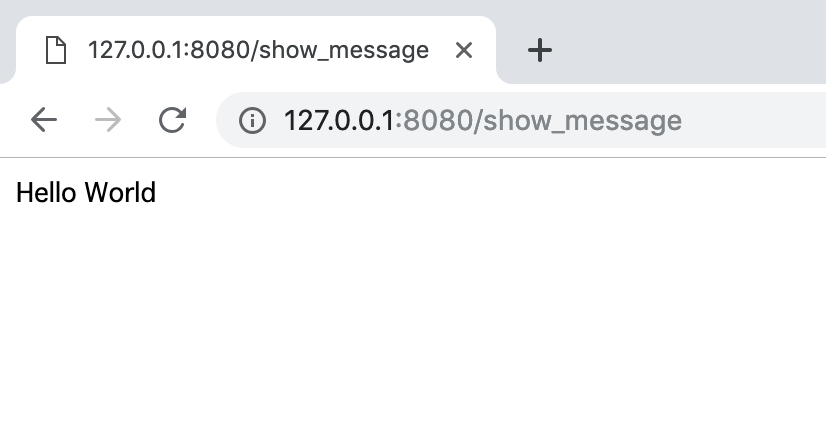1. Cookieの作成
まずはじめにクッキーを作成します。
func setMessage(w http.ResponseWriter, r *http.Request) {
msg := []byte("Hello World")
//ヘッダ内ではクッキーの値をURLエンコードする必要があるらしい
c := http.Cookie{
Name: "Qiita",
Value: base64.URLEncoding.EncodeToString(msg),
HttpOnly: true
}
http.SetCookie(w, &c)
}
2. Cookieを元にフラッシュメッセージを作成
func showMessage(w http.ResponseWriter, r *http.Request){
//構造体Requestの中には名前付きクッキーを取り出せるCookieメソッドがある。
//Name: "Qiita"のクッキーを探す、ない場合はerrにエラー文が入る。
c, err := r.Cookie("Qiita")
if err != nil {
if err == http.ErrNoCookie{
fmt.Fprintln(w, "メッセージがありません")
//fmt.Fprintln(w, err)
//エラー文が見たい人は上のコメントアウト外してみて
}
} else {
rc := http.Cookie{
Name: "Qiita",
MaxAge: -1,
Expires: time.Unix(1,0),
}
http.SetCookie(w, &rc)
val, _ := base64.URLEncoding.DecodeString(c.Value)
fmt.Fprintln(w, string(val))
}
}
3. 作ったハンドラ関数(showMessage, setMessage)をハンドラに変換、マルチプレクサにぶち込む
func main() {
server := http.Server{
Addr: "127.0.0.1:8080",
}
http.HandleFunc("/set_message", setMessage)
http.HandleFunc("/show_message", showMessage)
server.ListenAndServe()
}
完成形
main.go
package main
import (
"encoding/base64"
"fmt"
"net/http"
"time"
)
func setMessage(w http.ResponseWriter, r *http.Request){
msg := []byte("Hello World")
c := http.Cookie{
Name: "Qiita",
Value: base64.URLEncoding.EncodeToString(msg),
}
http.SetCookie(w, &c)
}
func showMessage(w http.ResponseWriter, r *http.Request){
//名前付きクッキーを取り出すメソッドCookie、指定したクッキーがないときエラーを返す
c, err := r.Cookie("Qiita")
//Name: "cookie"のcookieの構造体が存在しないとエラー文"http: named cookie not present"が送られてくる。
if err != nil {
if err == http.ErrNoCookie{
fmt.Fprintln(w, "メッセージがありません")
fmt.Fprintln(w, err)
}
} else {
rc := http.Cookie{
Name: "Qiita",
MaxAge: -1,
Expires: time.Unix(1,0),
}
http.SetCookie(w, &rc)
val, _ := base64.URLEncoding.DecodeString(c.Value)
fmt.Fprintln(w, string(val))
}
}
func main() {
server := http.Server{
Addr: "127.0.0.1:8080",
}
http.HandleFunc("/set_message", setMessage)
http.HandleFunc("/show_message", showMessage)
server.ListenAndServe()
}
検証
まずビルドして
$go build main.go
$./main
http://127.0.0.1.8080/set_messageを開いてみてください
chromeの検証機能を使ってCookieが作られていることが確認できますね

次に、http://127.0.0.1:8080/show_messageを開いてみてください。
Hello Wold
と出ましたでしょうか?

検証機能を使えばcookieが消えていることがわかります。
最後にCookieの構造体(モデル)載せておきますね〜
Cookie_struct.go
type Cookie struct{
Name: string
Value: string
Path: string
Domain: string
Expires: time.Time
RawExpires: string
MaxAge: int
Secure: bool
HttpOnly: bool
Raw: string
Unparsed: []string
}